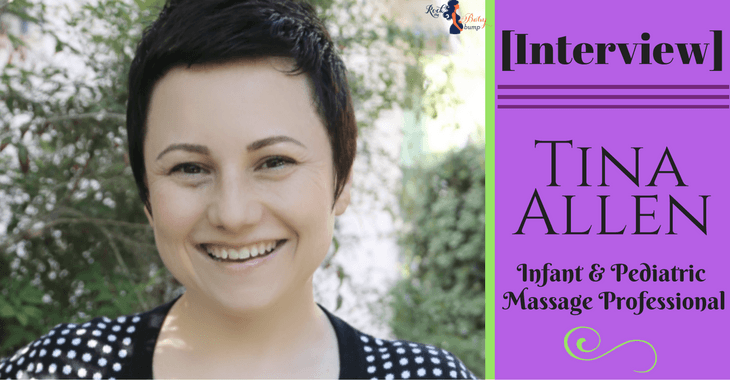I have been blessed to have been able to connect with Tina Allen, founder of the leading children’s health and nurturing touch organization Liddle Kidz™ Foundation.
This foundation is largely credited with popularizing pediatric massage therapy.
Ms. Allen is the premier expert and authority on infant and pediatric massage therapy.
She is an internationally respected lecturer, educator, and award-winning author of the best selling book “A Modern Day Guide to Massage for Children”.
Her innovative approach to children’s health has allowed her the unique opportunity to educate caregivers and healthcare professionals throughout the world and she has worked to create pediatric massage programs in leading medical institutions including the Mayo Clinic, Children’s Hospital Los Angeles and Nemours/Alfred I. duPont Hospital for Children.
Tina’s work with children around the world has garnered international honors including the Massage Therapy Foundation Humanitarian of the Year and the American Massage Therapy Association Award for Distinguished Service.
She travels 365 days a year in a tour bus with her husband and their awesome son, Otis! (just love that name)
Here we go 🙂
1. Tell us a little bit about your background, how you got started in the world of pediatric massage therapy, and how and why you created Liddle Kidz Foundation?
I never had the intention of becoming a massage therapist.
Originally, I studied pediatric occupational therapy knowing that I wanted to work with children in a health care capacity, but I had no interest in “poking and prodding” them.
While in the OT program, I soon discovered the extent of the education I would receive in integrative therapies would consist of a three-hour intro to massage/tactile therapy, movement, music and art therapies.
When I inquired as to when we would learn more, I was instructed to seek additional education elsewhere.
This is when I decided to go to massage therapy school.
I studied OT and Massage Therapy at the same time.
Being in both programs was very busy, but well worth it.
During my massage program, I inquired about pediatric and infant massage, and was told: “just ask their parents and do it lighter.”
Obviously, not enough information – so again I was told to seek information elsewhere.
This is what led me to explore research on infant and pediatric massage therapy, speak to healthcare colleagues and develop my own foundation focusing on the use of massage therapy and nurturing touch with children.
The Liddle Kidz Foundation began as an answer to the great lack of nurturing touch and connection in our society, and to encourage improvements in children’s health and welfare.
Liddle Kidz Foundation is an internationally focused nonprofit organization that uses the power of touch to reach the world’s most vulnerable children with experiences of appropriate nurturing touch that they often lack.
With nurturing, compassion and touch therapy, children will develop and reach their full potential.
Liddle Kidz Foundation strives to address children’s critical tactile needs by working directly with their families and healthcare providers in pediatric hospitals, hospices, and orphanages to provide comprehensive nurturing services, consultation, education, program development, and support.
We are committed to furthering the development of touch therapy services for vulnerable and underserved populations internationally.
Through education and support, we work to create replicable and sustainable change.
2. I understand that this is more than just a massage. Can you tell us about how or why you nurture the wellbeing of the parents as well?
When parents learn safe and effective ways to provide massage for their babies, not only does this provide amazing benefits to their child, but also the parents.
When massaging their baby, parents may experience the increase of Oxytocin (the nurturing, feel-good hormone) themselves!
3. What are some of the most important benefits of massage for baby and for the parent or the person giving the massage?
Massage in a family provides focused time together with baby, which reinforces eye-to-eye and skin-to-skin contact aiding in the bonding process.

Understanding a baby’s cues can increase a parent’s confidence to meet baby’s needs and follow their intuition.
And, when the parent asks the baby’s permission prior to giving a massage, this can help the family to establish lifelong respect for one another.
During a massage, parents can unwind and relax providing an opportunity to relieve their stress and tension.
Infant massage also creates a special time for siblings to take part in a bonding activity with a baby, too!
4. What’s the single-most interesting or surprising thing you’ve seen or learned while working with babies and kids?
I don’t know that I would say this surprises me, but definitely, it can be surprising to some parents.
Many parents believe massage should be used to calm down a baby or to help them stop crying.
This is actually not the best time for a massage.
The very best time for a parent to massage their baby is when they are happy, calm and give permission to receive massage and nurturing touch.
When a baby’s needs are respected, and we give massage only when they have been asked permission and say “yes”, then they do tend to relax better and have more benefits associated with the massage applied.
Massage should only be applied with a baby when they are ready, and only for as long as they wish to receive it.
When we practice this permission process, amazing benefits take place.
If parents only gave massage when the baby wanted to receive it, the baby’s crying would actually lessen overall.
5. What did you learn when teaching pediatric massage to families around the world? Can you share something you learned about the different types of massage therapy through all of your international experience?
Working around the globe, you learn so much about different cultures and the relationship to how touch is used, and received, in individual societies.
In every culture, there are preferences around areas of the body that should, or should not be touched.
Some of these beliefs are in relation to their cultural and societal beliefs, while other times it relates to religious or spiritual belief systems.
One of the most important aspects I have learned is the importance of respecting each and every culture and adapting touch therapy techniques and teaching methods in ways that are best received in multiple societies.
In this way, all families have access to using safe and nurturing touch with their children.
6. What are the styles and benefits specifically for children with special needs?
Massage therapy has been found to be very beneficial to children of all backgrounds.
However, this nurturing touch can be especially beneficial to children with a variety of healthcare needs.
Babies and young children who appear to have tactile and sensory sensitivities may benefit from the use of gentle techniques that are adapted to meet their unique needs.
It is also a good idea to think about stimulation in the environment.
If the room is too stimulating, trying to add more stimulation, even as calming as massage, can be one more environmental item a child needs to process.
For little ones with respiratory considerations, using massage therapy to help with even, calm breathing patterns is helpful, while at the same time giving babies a feeling of relaxation.
Babies that are born early, can often gain healthy weight through the use of infant massage.
When a child is diagnosed with cerebral palsy, or brain injury, we see a wide array of presentations.
Often times, a child affected by cerebral palsy, may have a combination of low and high muscle tone, and a decrease in abdominal motility (constipation issues).
We can address many of these presentations and concerns with the use of infant massage.
As a baby grows into a young child, a parent may find additional reasons to use massage therapy to help increase their ability to focus and concentrate.
7. Tell us about your project Liddle Kidz Foundation Global. What’s it about, how and why did you create it and what do you do?
As part of our mission, Liddle Kidz Foundation organizes groups of volunteers to provide hands-on care and education in many countries around the world.
We focus on working with organizations and facilities that serve infants and children who have been orphaned or may have special healthcare needs.
Many of these settings have children ranging in age from babies born prematurely to adolescents.
The number of orphans around the world is astounding.
There are so many children and so few caregivers.
These children don’t have someone to run to their aid when they’re in need.
They don’t have someone to hug them and hold them when they’re under stress.
Children need to know someone out there cares for them.
Without meeting this fundamental need, all else is lost and there is no hope of a viable future. It is our moral duty to help these children know they matter.
Liddle Kidz Foundation Global outreach is different – we don’t just provide hugs and cuddles, we create programs that are sustainable and replicable.
We know that the best way to support children’s healing is by supporting their caregivers as well.
Our experience has shown that orphanages find it a challenge to meet the emotional and developmental requirements of children, including personalized care and attention.
Our goal is to provide infants and children with nurturing touch while working directly with their caregivers to provide education and support.
In addition to providing massage and touch therapy, we also teach the staff and caregivers who will stay and work with the children far beyond our time there.
8. What is touch therapy? How has this nurturing touch approach affected your teaching as well as these kids who so desperately need it?
Massage is beneficial to almost anyone, but children, in particular, have an essential need for touch.
Touch stimulates our brains in many ways, most noticeably in our Limbic Cortex, which is the area of the brain that allows us to generate emotions and allows us to make a connection with others.
The benefits of massage therapy can be achieved during a relaxing thirty-minute full body session, or simply by massaging the hands or feet for a few moments.
In children, touch not only furthers growth and development, but it is also biologically necessary for their survival and numerous research studies document the many benefits of receiving touch therapy, therefore, can be a vital source of healing and healthy development.
The evidence that massage provides global benefits to a child’s health far outweighs any evidence of negative effects.
9. Can you share some massage tips for parents to help improve their children’s sleep?
Using infant massage can often help an infant to sleep more soundly.
If you read the literature, you will find that infant massage often contributes to the decreased length of time it takes for an infant to fall asleep, and causes them to sleep longer and deeper.
Obviously, every baby is different, so there is no exact science as to how long your baby will sleep post massage, but it is highly likely they will sleep better.
Which in turn, is an awesome benefit for a parent, too.
Using massage techniques that help the nervous system to become more calm and relaxed are helpful with sleep time.
Gently stroking on the baby’s arms, legs and back, in the direction away from the body can help.
There is also a little bit of info out there, that stroking in a downward direction from the forehead down the bridge of baby’s nose, magically helps their little eyes to close.
10. Where can people find out more about you and your services, if they want more information?
The best resource for infant and pediatric massage would be the Liddle Kidz Foundation website: www.LiddleKidz.com



Leave a Reply